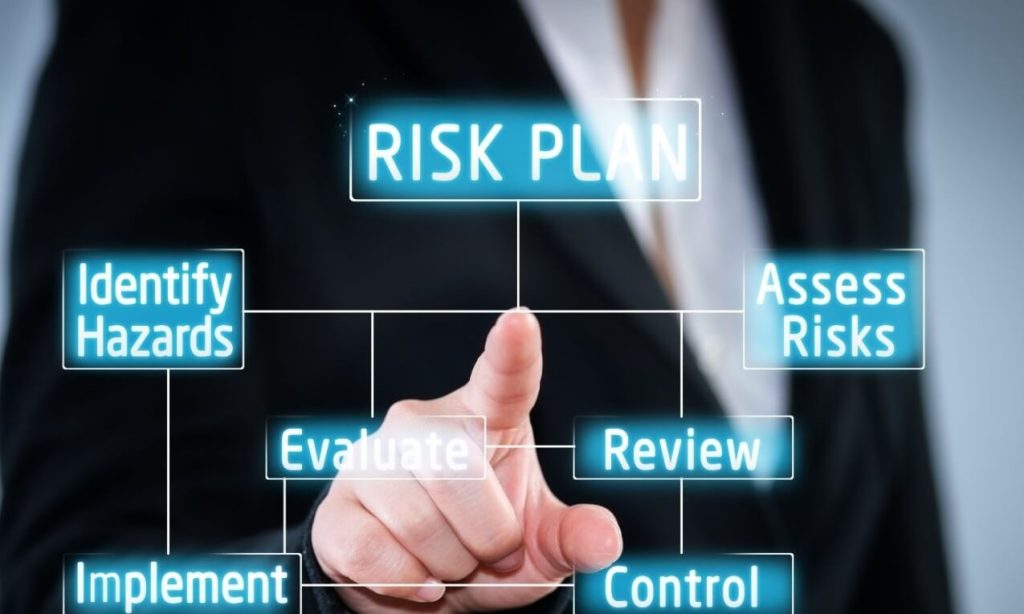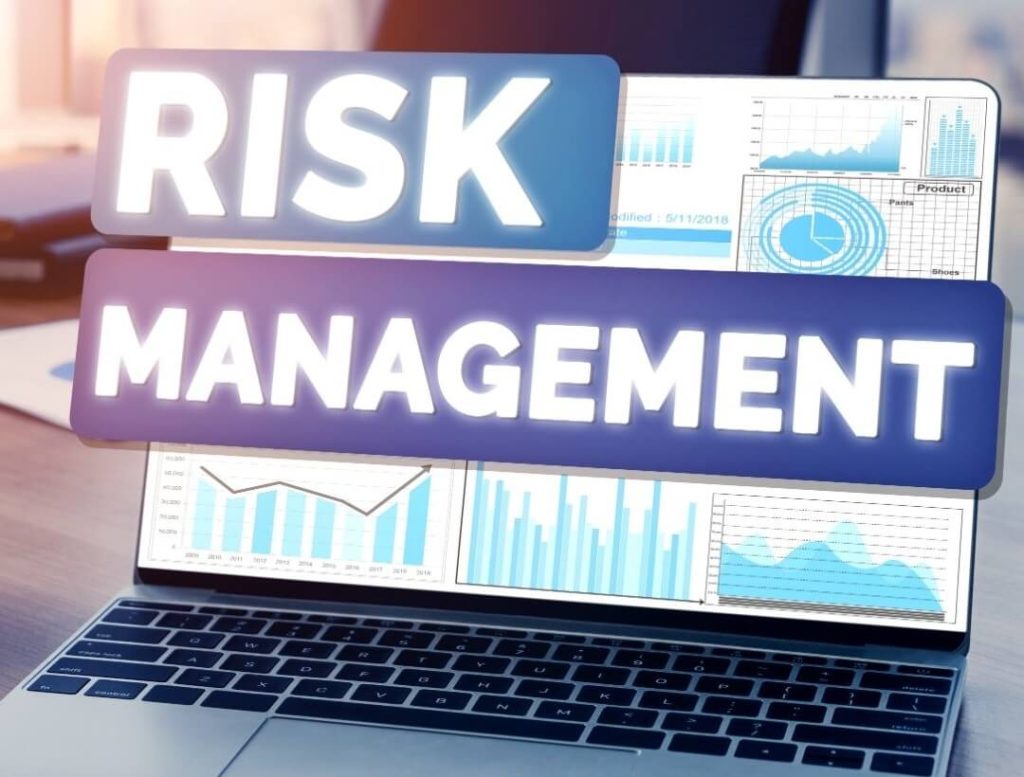Composite Risk management is vital in the decision-making process as it guarantees safety and success by eliminating any threats that may arise. Composite Risk Management can enhance this step. Structure processes are designed for composite risk management. Its goal is to analyze, reduce, and monitor risks efficiently.
This blog will discuss the basics of Composite Risk Management, Composite Risk Management tools, techniques, principles, steps, and its applicability in real life to further maximize their understanding and decision-making processes in any scenario.
What is Composite Risk Management (CRM)?
Composite Risk Management (CRM) combines threats and benefits of action to formulate strategies to help assist in developing, analyzing, disabling, and reducing threats. By interpreting possible situations, the decision-making processes undertaken are done so in an informed manner, and safety and efficiency are top priorities.
CRM first emerged in military systems designed to control risk management in organizational settings where the environment is highly complex and decision-making occurs under conditions of uncertainty. Over the years, it has also been adapted and applied in the medical, building, and project management industries.
CRM’s importance lies in its potential to improve decision-making since it provides an appropriate basis for evaluating risks and returns. By lessening risks and introducing effective measures, CRM also protects resources and personnel and helps achieve targets. In other words, CRM offers ways to deal with the unknown with assurance in a tense military engagement or a day-to-day company decision.
Key points of CRM
Basic Three CRM Core Principles form the basis of this application and serve its end product to its fullest:
Connecting Risk Management to Planning
In comparison, CRM is frequently most effective when embedded in the planning stage. Risk management should also be done. In this case, many hazards can be identified and mitigated as soon as possible, limiting inconvenience later on. For instance, in an engineering professional practice construction project, a planning phase where site visits are conducted to assess equipment conditions and operational risks will be offered to reduce undesirable events.
Complex Decision Making based on acceptable risks
CRM emphasizes whether the action is expected to produce acceptable rewards that are not disproportionate to the risk involved. This precept necessitates the cross-functional directive or individual applicable degree of risk tolerance. For example, in practical military manoeuvring, the chance of achieving the objective is put against the probability of suffering casualties, and decisions are then made on strategies.
Ongoing Evaluation
Risks are constantly changing. Continuous assessment helps align risk management practices with changing conditions. CRM accumulates new information and adapts to ensure safety and efficacy by constantly checking conditions and outcomes. This precept is important in business areas such as medicine, where patient states change quickly and split-second decisions are needed.

The Five Steps of Composite Risk Management
Step 1: Identify Hazards
In the Composite Risk Management Cycle, the first task involves determining risks associated with people’s activities or behaviours. Every activity of this nature involves some risks, and in this manner, the risk management strategy is set. Hazards range from concrete threats, such as unsafe equipment in the workplace, to psychological threats, such as poor collaborative communication in a team. For instance, in medicine, key dangers could be locating the risk of infection in a hospital room taking medication doses or errors in the dosing.
Step 2: Approach Towards Hazards
As soon as the risk factors have been established, we can determine the probability of these events occurring and their possible damages. It is deciding the chances and scope. Risk matrices allow for classifying those risks into low, medium, and high levels in a more simplified manner. A risk matrix, for example, can analyze hazards in a workplace environment by ranking difficult equipment use as a high-risk or low-risk use in minor injury situations.
Step 3: Making Decisions and Formulating Controls
In this stage, plans are outlined to either reduce the risks at hand or, ideally, fully remove them. Solutions are determined by engineering, procedures, or retraining of relevant personnel. Such considerations as cost, technical feasibility, and the degree to which the proposed controls will be effective are factored into the decision-making process, for example, in a factory or a manufacturing plant, where the dangers of getting injured while using, installing or removing equipment and equipment controls like guards can be used to reduce the risks.
Step 4: Bringing Controls into Action
Once the mechanisms have been developed, they should be followed and implemented. Communication regarding roles and responsibilities is the first important task that must be carried out, along with adequate resources and training so that all involved know their respective tasks. Real-life examples are the fixing of safety barriers on a construction site or the fixing of certain software protocols for secure data in IT systems. In other words, implementation is the application of plans based on measures taken to mitigate threats.
Step 5: Supervise and Evaluate
The last step focuses on enforcing implemented controls and making changes to them if the need arises. The act of supervision guarantees that the controls are implemented while evaluating them, which serves to give systematic feedback on their effectiveness. Supervision and evaluation usually work hand-in-hand. For example, a supervisor on a construction site may verify that workers are equipped with safety measures, but audit reviews might be used to evaluate the accident rates. In short, improvement is needed to continue effectively managing risk.
The five-step process provides a sufficient basis for addressing CRM as it encompasses all aspects of decision-making related to management safety and efficiency.

Applications of Composite Risk Management
Composite Risk Management (CRM) is widely applicable in several areas, such as workplace accident prevention or interpersonal relations decisions. CRM’s flexibility and logical structure are important features in risk management.
In a Business Setting
CRM technology ensures the employees’ safety and compliance with the industry regulations. By trying to identify the risks that are bound to arise, assessing their impacts and putting some control measures in place, establishments can ensure the safety of CRM strategy. For example, several considerations must be considered in a factory dealing with CRM. This would include machinery activity risks and installing measures such as safety guards alongside an employee training schedule on personnel handling. This would reduce accidents and improve employee accountability practices.
For Professionals in the Armed Forces
As an abbreviation, CRM has an extensive meaning and stands for ‘cockpit resource management’, and the many applications of CRM in the military include managing the risks posed to personnel while assuring that the mission goals are attained. Military leaders utilize CRM to estimate the resources and returns that a mission might bring in and the costs it would incur, ensuring the course of action is proper. For example, when planning a mission, commanders use CRM with the view that it is possible to factor in environmental risks, threats, and even logistical factors that would need protection against them.
In Project Management
Managing risks that might affect time, finances, or objectives relies on customer relationship management. For example, with idea generation in the software industry, there could be an integration assessment of whether there could be a delay in introducing new features. How best can problems be solved? The aim here is to strengthen project deliverables.
In Everyday life
On a personal level, decision-making can also be managed in the same way to try and ensure successful results and fewer risks. You can imagine wanting to arrange an outdoor function, but the chances of rain are high, and then trying to figure out the best solution, for example, a tent or a shelter. Let’s take the case of managing investments, where risk and earnings are weighed against each other, and goals are set.

Benefits of Mastering CRM
Mastering Composite Risk Management has borderline benefits, both professionally and personally. These include improved decision-making and strategic planning. When there is a need to analyze and price risk, the decisions made are appropriate and right. This combination of planning and decision-making means that circumstances are assessed and changes are managed to encourage positive outcomes.
CRM has increased safety and minimized accidents, which is possibly one of its biggest perks. Be it at the office around heavy machinery, in military missions, or in any other personal activities, CRM reduces risks through proper planning and strategies. For instance, if CRM is used in construction sites, the probability of workers getting hurt on the job is significantly brought down, therefore saving the business’s assets.
CRM also aids in increasing an individual’s ability to be more free in a fast-emerging environment. By focusing on methods such as continuous predictions and adjustments, CRM ensures that people in these changing circumstances remain capable of performing their tasks. For example, in the event of a natural disaster that warrants immediate response, if a team is to respond suddenly, using this CRM, the teams will alter their plans to suit the new possibilities they foresee.
Difficulties and Solutions
Implementing CRM may have certain issues, but it has several advantages. Change is one of the most common challenges during development. People are generally reluctant to apply new practices and working methods, especially when the old way has worked well, and the new procedures are unnecessarily complicated and lengthy. To avoid this scenario, companies can communicate specific tools to increase safety and efficiency with CRM and offer guidance and assistance during deployment.
Inadequate Training is yet another imperative hurdle. An individual without knowledge of CRM principles and tools may have difficulty employing the framework. Addressing this issue encompasses spending resources on extensive training programs that encompass concepts and practical approaches. For instance, employees may benefit from workshops and online courses, enabling them to understand the importance of integrating CRM into everyday work.
Underestimating risks, also and arguably the most harmful blunder, is a critical pitfall that is bound to aggravate the already bad situation with CRM. When risks are not effectively analyzed, strategies and plans that are meant to mitigate these risks may not work, leaving the organizations exposed. Promoting an attitude of preparedness and readiness to learn is a key aspect of Transcosmos’ culture. Regular risk assessments, feedback and reviews, and audits of existing controls can do this.

How to Supercharge Your CRM Knowledge
Taking certain measures as individuals or teams to maximize the influence of Composite Risk Management and derive great benefits from it is not harmful.
Training and Certification
Formal training programs and certifications work best as part of CRM’s fundamentals. Additionally, many institutions have developed and run courses across a range of industries, both online and offline. For example, those involved in project management can attain risk management certifications as part of their skill package, while those in the military may find operational validators have CRM training.
Tools and Resources
The available tools and resources make CRM applications less complex and appropriate for a wider market. Software programs like risk management and project management applications facilitate threat recognition and the implementation of appropriate controls. Further, books or guides provide example contexts in which specific CRM tools should be utilized, ensuring uniformity in tactics used.
Case Studies
Looking at various scenarios and instances where people or organizations have successfully employed CRM strategies can provide a great source of information and motivation. Case studies demonstrate the practical aspect and application of the problem being faced by an organization and how CRM methodology has been employed to solve the problem in case the organization is having any. For example, imagine a community facing earthquake-prone terrain; a case study on disaster management could illustrate how CRM could increase the area’s resilience to natural disasters, saving more lives and money.
Conclusion
The Composite Risk Management approach is indispensable when making the right judgment and taking the right action at work and in everyday life. CRM is efficient and effective since its principles can be mastered, significantly enhancing the possibility of spotting risks and estimating and eliminating them. Use appendices with facts and figures as well as illustrations as a guide to familiarize yourself with CRM to help you deal with ever-changing risks and to be able to think ahead.
